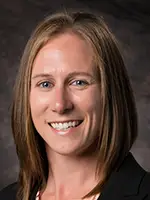
How much planning do you put in for a safe and successful silage harvest? – Becky Arnold and Stephanie Jens, Lallemand Animal Nutrition
 Click here for Arnold’s and Jens’ PowerPoint presentation.
Click here for Arnold’s and Jens’ PowerPoint presentation.
Agriculture is the eighth most dangerous job in the U.S., according to Becky Arnold, a Lallemand Animal Nutrition territory business manager.
Arnold explained that 50% of all fatalities in the agriculture industry involved tractors/vehicles and machinery, with crushing being the leading cause of death.
“Everything we do is very dangerous,” said Arnold, “and the equipment we are using is the biggest area of concern.”
During her general session at the 2020 Vita Plus Custom Harvester Meeting, Arnold spoke about the employees most at risk on harvest operations and why accidents happen; then, Stephanie Jens, a Lallemand Animal Nutrition territory business manager, joined her to discuss how prevention is the key to safety.
Who are most at risk?
Between 2009 and 2018, Arnold said 10% of deaths on farms were from people under the age of 20, and 38% were from people over the age of 65. The leading cause of death was transportation-related incidents, including tractor roll overs.
“Whether you’re new or doing things your whole life, it doesn’t matter,” Arnold said.
This becomes even more startling when you consider how many employees are under the age of 20 and have little or no experience around the machinery. Arnold said, of the more than 2 million employees in agriculture, nearly a quarter of those employees have no experience working with this equipment.
“Half of your employees could potentially have no experience,” Arnold said.
Why accidents happen
Human factors and equipment factors are two main reasons accidents happen, according to Arnold.
Fatigue is a major human factor behind many accidents. It will set in quickly, especially after dark, however, Arnold said, “Recognizing your own limits and knowing when to call it quits is a big factor to preventing mistakes.”
Other human factors include drug use, legal and illegal, and cognitive functions. She said the male brain doesn’t fully develop until age 25, and many young male employees may not have the cognitive abilities to handle the pressures or tasks.
As for equipment factors, Arnold said it is best to have all equipment “harvest-ready” to reduce headaches and pressures. Other best practices include making sure all safety guards and shields are installed properly, all fire extinguishers are working properly, and, if you need to stop and work on equipment, turn off the ignition, remove the key, and put it in your pocket.
Arnold said all of this is common sense, but we need to take the time to do it correctly to save lives.
Prevention is the key to safety
Jens closed the session with a discussion on how to prevent accidents. With the main goal of keeping everyone around you safe, the biggest risk to achieving that goal is complacency.
“When you are in bunkers and trucks every day, you become complacent,” Jens said.
One of the easiest steps to take is to have a preharvest meeting each year. This meeting should cover the following:
- Expectations: Layout your expectations for your employees. If they know what you expect, then they are more likely to follow them.
- Contacts: Establish who your employees should contact for specific questions.
- Communication: Make sure everyone knows how you want them to communicate and make it non-negotiable. If it is by cell phone, what are the specific rules you have for them?
- Equipment safety: Discuss safety when traveling on the roads and on the piles, as well as what to do in the event of a breakdown or accident.
 In addition to preharvest meetings, Jens said it is good practice to hold annual safety meetings and a post-harvest review. This review is important to identify wins and challenges from the previous year to reinforce the good things and address the negatives.
In addition to preharvest meetings, Jens said it is good practice to hold annual safety meetings and a post-harvest review. This review is important to identify wins and challenges from the previous year to reinforce the good things and address the negatives.
In closing, Jens emphasized how important it is to overcommunicate and build a work culture where it is OK to talk about safety concerns and ask questions.
“This takes commitment and daily practice, but if safety is compromised, it isn’t worth it,” Jens said.
| Category: |
Forage Foundations Safety |

